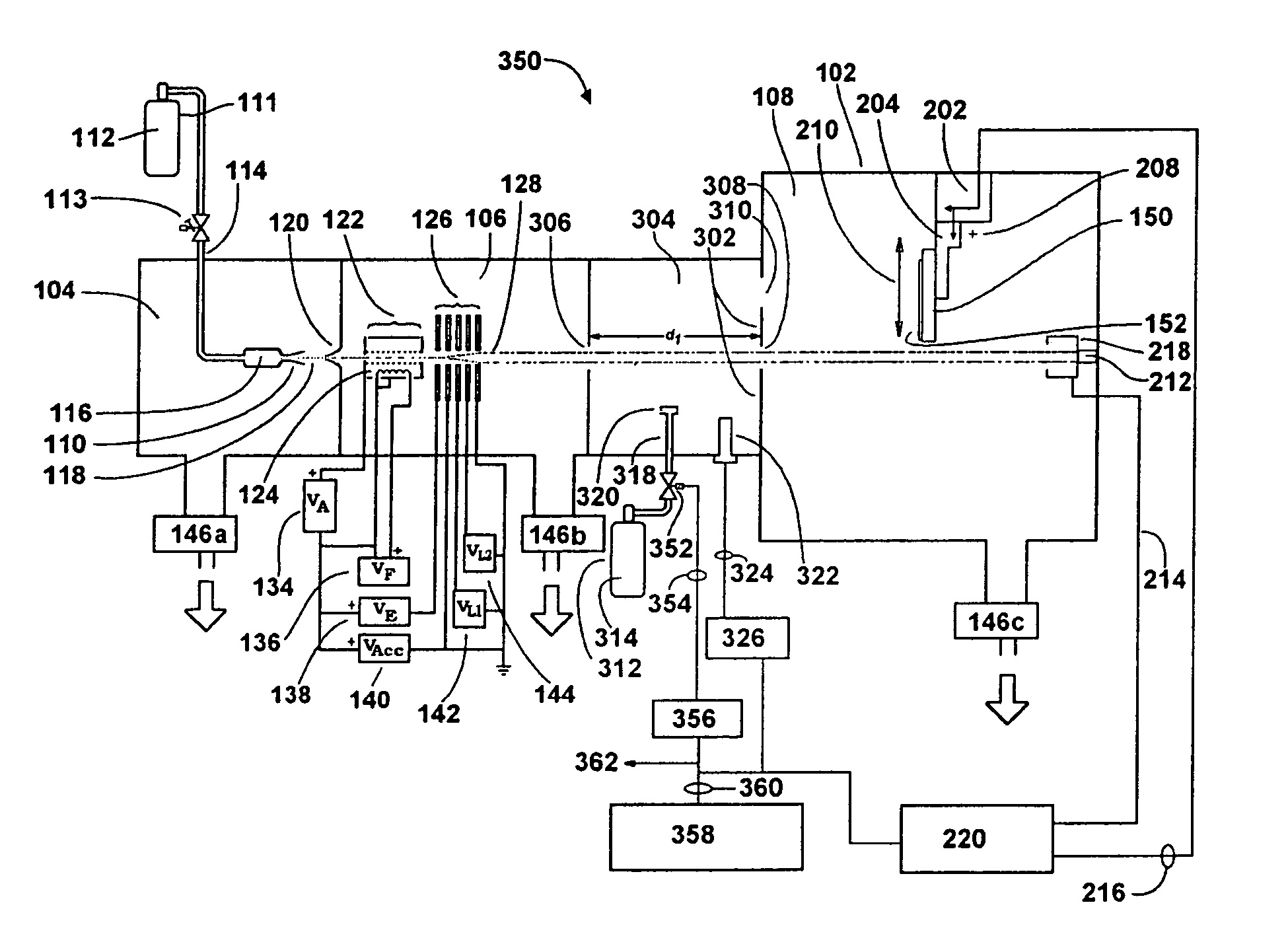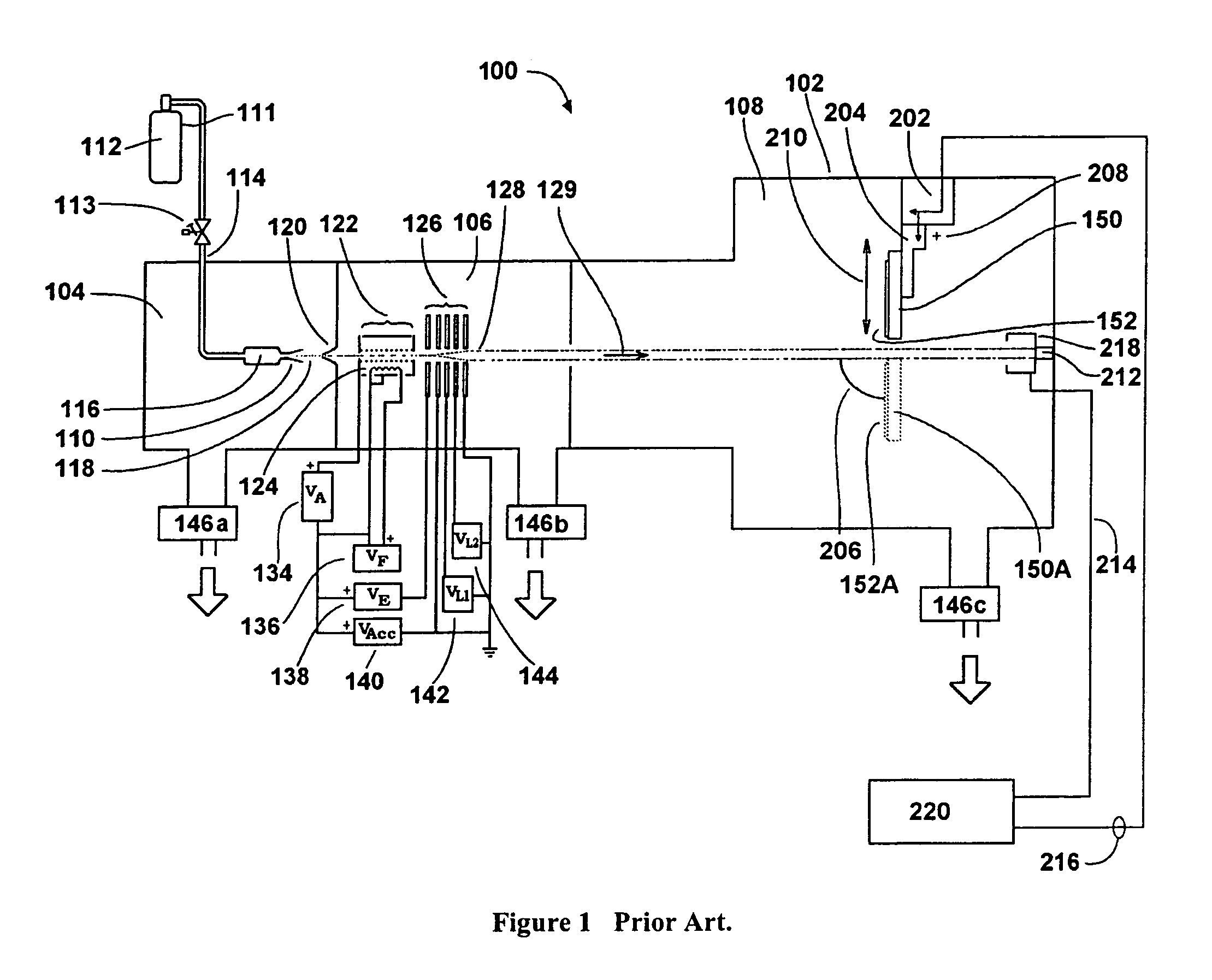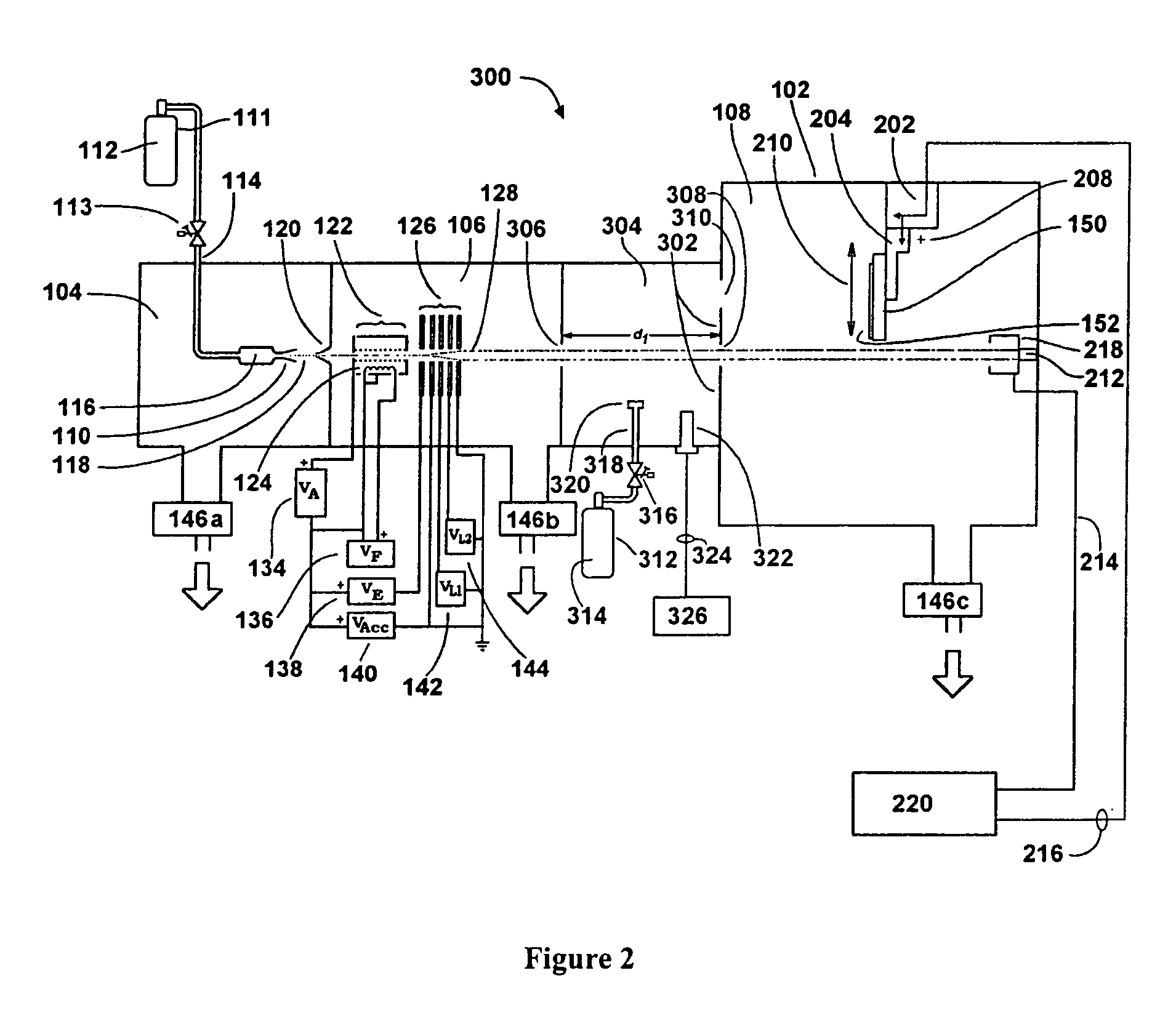Method and apparatus for improved processing with a gas-cluster ion beam
a technology of gas-cluster ions and processing methods, which is applied in the direction of electric discharge tubes, measurement devices, instruments, etc., can solve the problems of not always smoothing the surface of gcib processing, the impact effect of large cluster ions is substantial, and the charge state and energy distribution cannot be readily predicted. achieve good etching capabilities and good smoothing capabilities
- Summary
- Abstract
- Description
- Claims
- Application Information
AI Technical Summary
Benefits of technology
Problems solved by technology
Method used
Image
Examples
second embodiment
[0045]FIG. 3 shows a schematic of a GCIB processing apparatus 350 according to the present invention. A pressurized gas 314 is stored in gas storage cylinder 312. Pressurized gas 314 is preferably an inert gas, preferably argon. A mass-flow-control valve 352 controls flow of pressurized gas 314 through gas feed tube 318 and diffuser 320 into the pressure chamber 304. A general purpose controller 358, which may be programmable and microprocessor based, and which may be a controller which is also used for control of all or a substantial portion of the GCIB processing apparatus 350, receives pressure measurement signals for the pressure in pressure chamber 304 from the pressure sensor 322 via cable 324, pressure sensor controller and readout 326, and cable 360. The controller 358 also controls the mass-flow-control valve 352 via cable 360, mass-flow-control valve controller 356, and cable 354 to set and regulate the flow of gas 314 into the pressure chamber 304. According to whether th...
third embodiment
[0046]FIG. 4 shows a schematic of a GCIB processing apparatus 400 according to the present invention. Ionizing / acceleration chamber 106 and processing chamber 108 communicate with each other and have substantially the same pressure, PP2. A pressure cell 402 has a pressure cell interior 408 that can be pressurized to a pressure PC2 that is typically a higher pressure than PP2. The pressure cell 402 has a pressure cell entrance aperture 404 and a pressure cell exit aperture 406. GCIB 128 enters the pressure cell 402 through pressure cell entrance aperture 404 and exits the pressure cell 402 through pressure cell exit aperture 406. The path D2 of the GCIB 128 through the pressure cell 402 has a path length d2, along the GCIB path D2. The pressure cell entrance aperture 404 and the pressure cell exit aperture 406 have a combined total gas conductance, CP2. A pressurized gas 314 is stored in gas storage cylinder 312. Pressurized gas 314 is preferably an inert gas, preferably argon. A mas...
PUM
 Login to View More
Login to View More Abstract
Description
Claims
Application Information
 Login to View More
Login to View More - R&D
- Intellectual Property
- Life Sciences
- Materials
- Tech Scout
- Unparalleled Data Quality
- Higher Quality Content
- 60% Fewer Hallucinations
Browse by: Latest US Patents, China's latest patents, Technical Efficacy Thesaurus, Application Domain, Technology Topic, Popular Technical Reports.
© 2025 PatSnap. All rights reserved.Legal|Privacy policy|Modern Slavery Act Transparency Statement|Sitemap|About US| Contact US: help@patsnap.com



